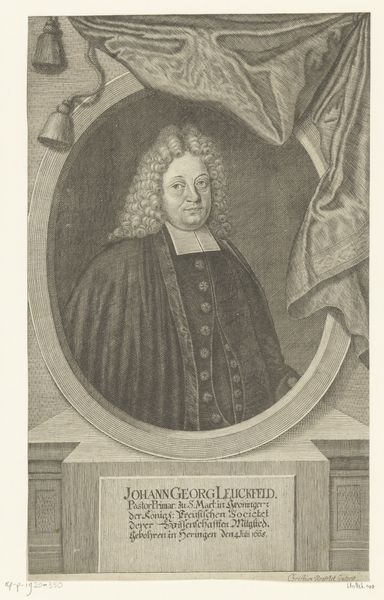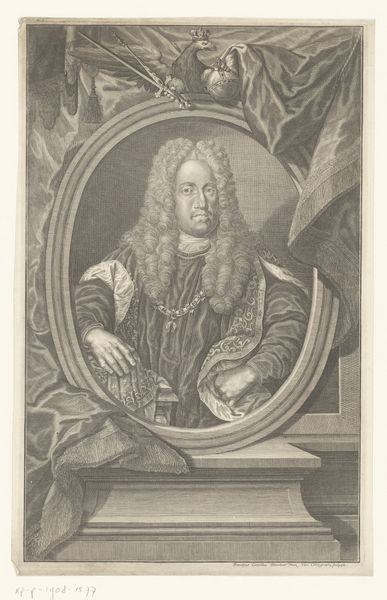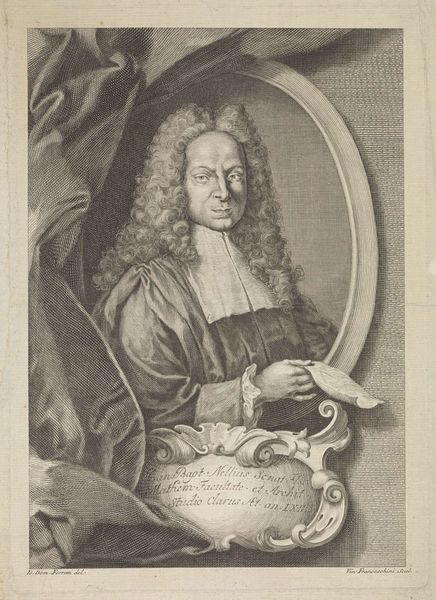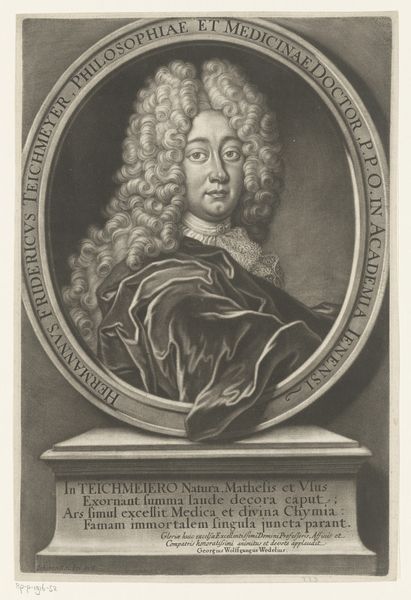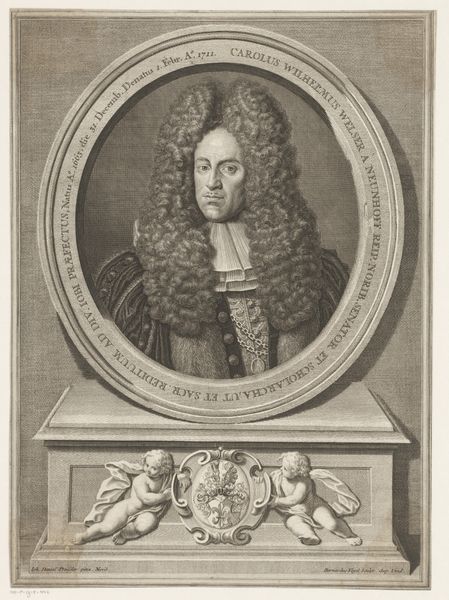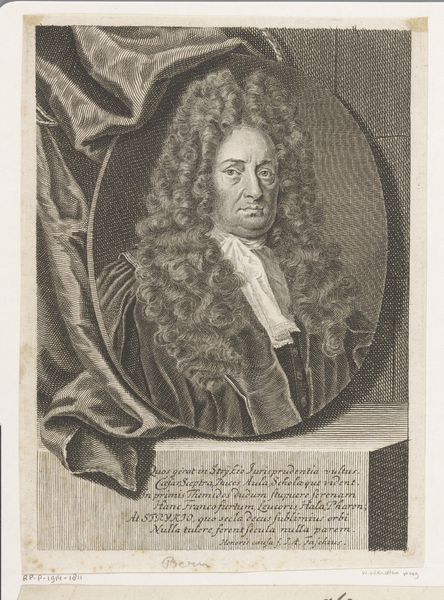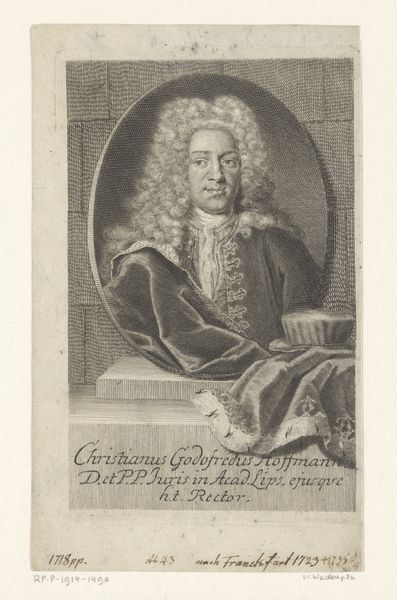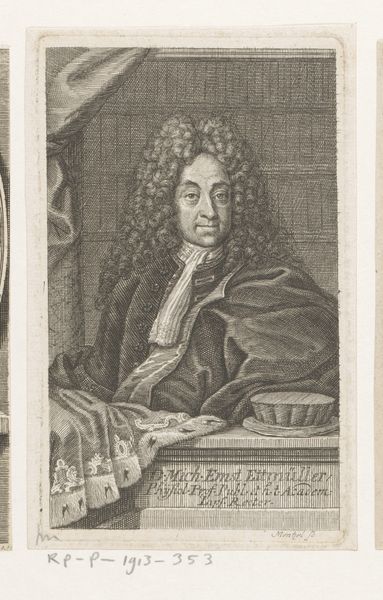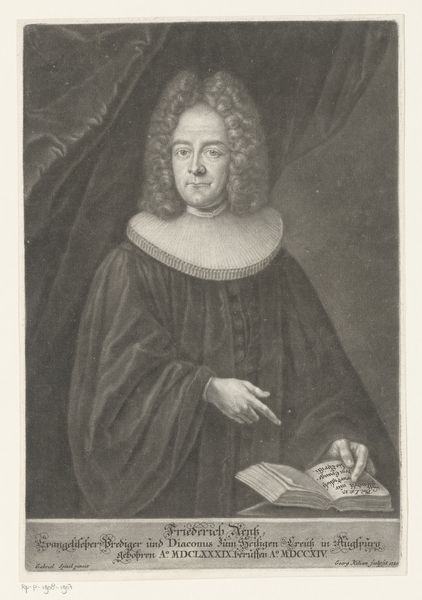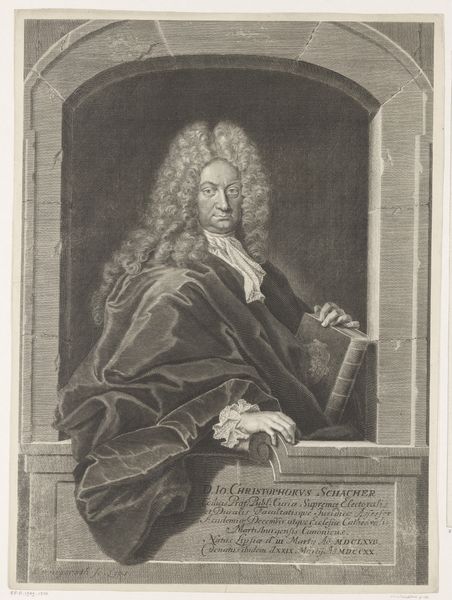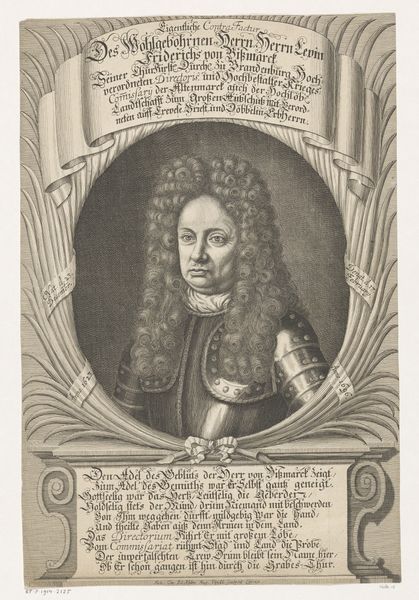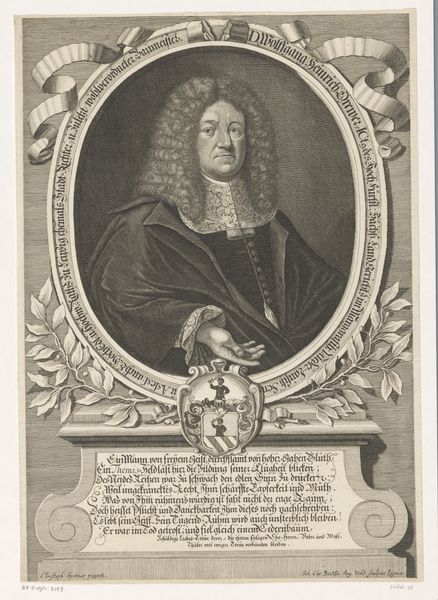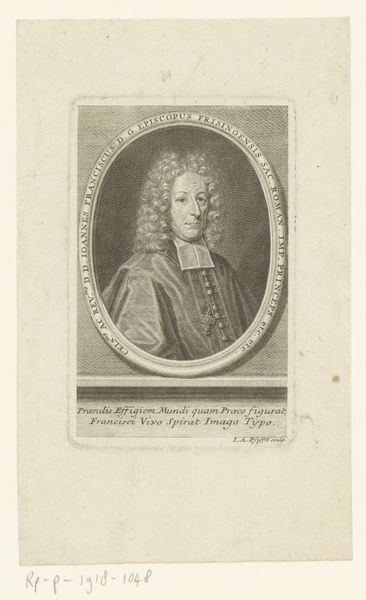
Portret van Jozef Klemens, keurvorst en aartsbisschop van Keulen 1687 - 1743
0:00
0:00
engraving
#
portrait
#
baroque
#
old engraving style
#
portrait drawing
#
engraving
Dimensions: height 150 mm, width 97 mm
Copyright: Rijks Museum: Open Domain
Curator: This engraving by Johann Georg Mentzel, dating from around 1687 to 1743, presents a portrait of Joseph Clemens, a Prince-Bishop of Cologne. Editor: The detail is impressive. Look at the dense crosshatching that forms the background! The robe is exquisitely done. It has this sheen and texture that almost feels real even in such a scaled down, reproduced medium like an engraving. Curator: Yes, the piece reflects the Baroque aesthetic quite prominently, particularly in the rendering of Clemens' attire. It is a window into the social stratification of the time period. Engravings such as these played a vital role, in that it made his likeness available for public consumption. It amplified the visibility of this powerful figure. Editor: And consider the sheer labor that goes into this sort of process, scratching the image meticulously onto a plate to produce reproducible images. Each line serves not just a decorative function, but contributes towards how materials were disseminated, consumed, and even understood. I bet the print workshop it came out of looked like a total madhouse! Curator: These portraits were undoubtedly part of a larger political project. To control and shape perceptions of authority required circulating approved and reproducible images of oneself to a wider public. It created a visual presence, a brand identity, if you will, for figures like Clemens. Editor: Absolutely. The mechanics and the physical constraints inform what we see and how it’s meant to function within a particular social setting. The circulation would reinforce existing power structures. Without it, what we call Baroque might not even be. Curator: In summary, this engraving serves as a potent artifact. We can draw insights on the role that political figures played in disseminating representations of power and the institutions that shaped these public figures. Editor: And beyond the social and political aspects, let’s remember the artistry that converts metal and ink into images, thus reminding us to see value in often-overlooked processes that reinforce visual experience and social ideologies.
Comments
No comments
Be the first to comment and join the conversation on the ultimate creative platform.
